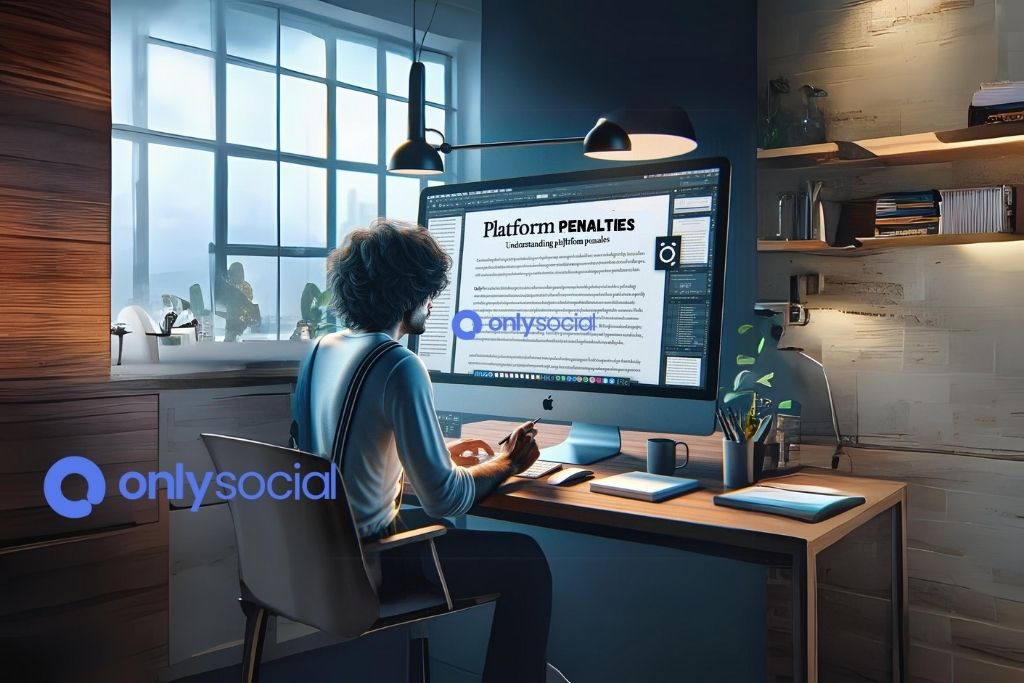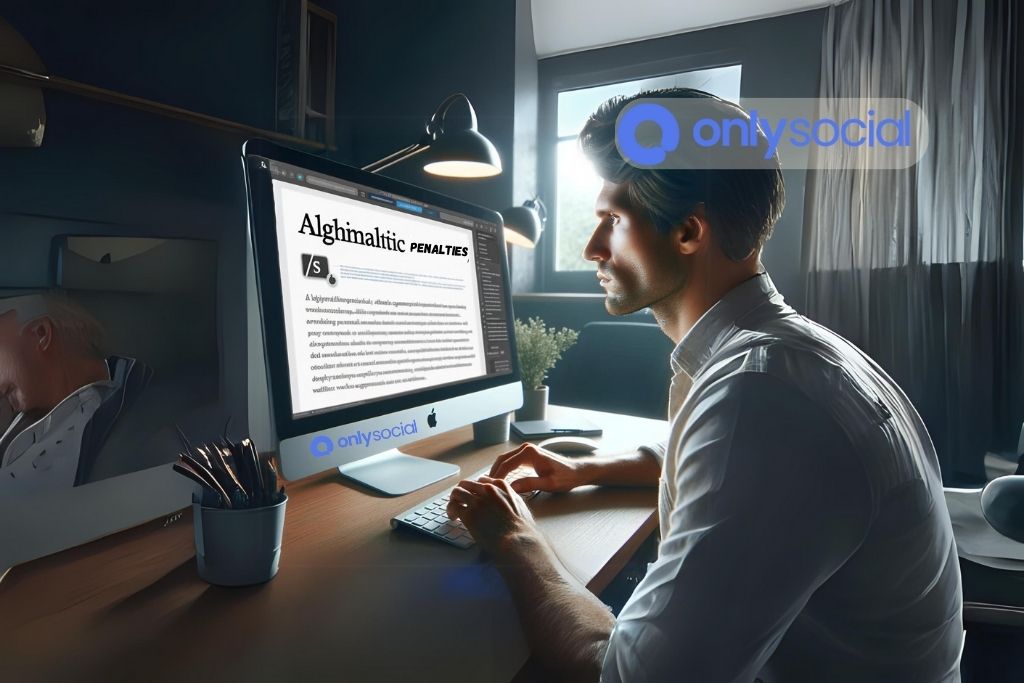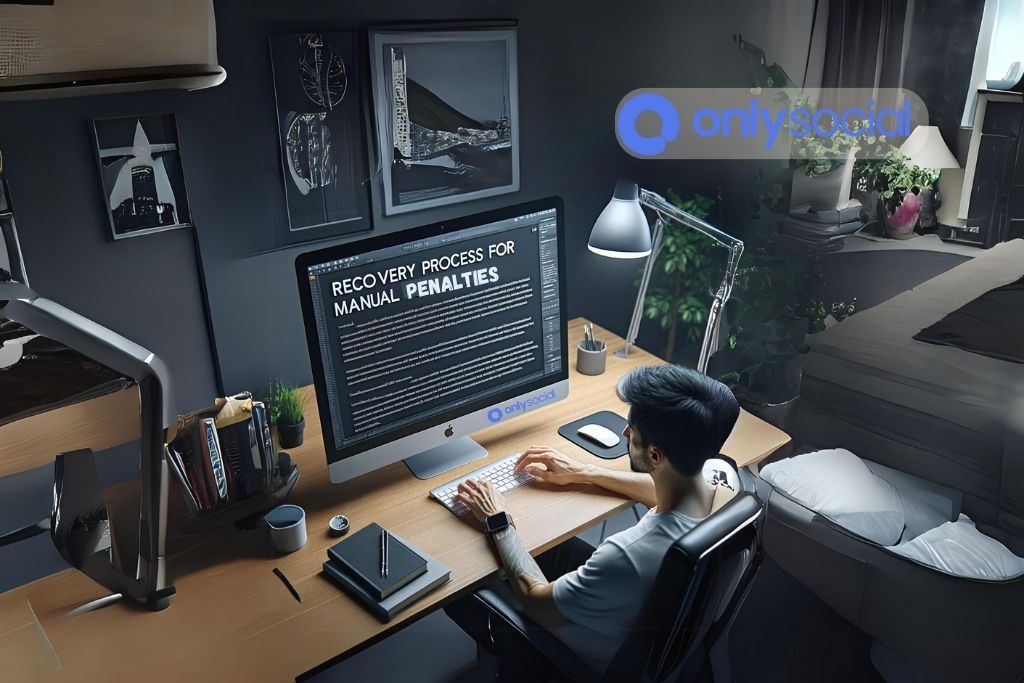Proven Strategies for Overcoming Platform Penalties and Boosting Your Rankings in 2024

The digital landscape is an ever-evolving setting, keeping marketers, writers, and even tech-savvy individuals on their toes. As you navigate through this intricate web, one challenge often rears its head: overcoming platform penalties.
Just as law enforcement maintains order in our communities, search engines like Google, Bing, and Yahoo similarly police their platforms. Ensuring quality, transparency, and relevance in the broad digital universe is paramount. Unfortunately, even the best of us can sometimes run into penalties that can severely alter our online performance.
It seems daunting, doesn’t it? But worry not. Overcoming platform penalties is not insurmountable. It requires insight, persistence, and the right approach, which will help you align with these platform’s ever-evolving algorithms.
Table of Contents [show]
Why Overcome Platform Penalties?
Ask any online entrepreneur or digital marketer about their worst nightmare, and it’s likely you’ll hear tales of significant traffic drops and disappearing search presence. In the blink of an eye, your virtual existence can take a hard hit. And the culprit? Platform penalties.
When you’re slapped with a penalty, your website can suffer drastically, resulting in reduced visibility, plummeting organic traffic, and potentially, decreased revenue. Overcoming these platform penalties are crucial for your business’s survival in this fast-paced digital scenario. It’s about protecting your online reputation, retaining users’ trust, and maintaining a steadfast online presence.
The Prerequisite: Understanding Platform Penalties
Before we delve into the technical aspects of overcoming platform penalties, it’s crucial to gain a basic understanding of what these penalties are and why they’re imposed. In the subsequent sections, we’ll dissect this complicated subject matter, ensuring clarity and comprehension, preparing you to tackle these penalties head-on with confidence.
As you read on, we encourage you to understand that you’re not alone and that penalties, while disheartening, could be the catalyst for you to streamline your digital strategies and adapt to the changing digital ecosystem. It’s all about evolving alongside the platforms that place your business in front of global audiences.
Embark on this journey towards overcoming platform penalties and regain your standing in the sprawling digital universe.
Understanding Platform Penalties
At the core of overcoming platform penalties is a fundamental understanding of these penalties themselves: what triggers them and how they impact your platform. By understanding these intricacies, you set the stage for strategic moves that safeguard your business from the potentially harsh consequences that platform penalties could inflict.
What are Platform Penalties?
Think of search engines as gatekeepers of the digital world. Their primary assignment is to ensure that each user’s experience is rewarding. One way they do this is by categorizing and ranking the vast amount of content published online. But with immense power comes immense responsibility. These tech giants have to make sure the content presented is genuinely beneficial to the user.
To accomplish this, search platforms use complex algorithms that implement sanctions when they detect non-compliance with their established rules. These sanctions, or penalties, could be because of deliberate manipulation (black-hat SEO) or unintentional neglect of guidelines. Overcoming platform penalties is, therefore, partly about staying within the lines drawn by search engine guidelines while providing valuable content for users.
Common Triggers of Platform Penalties
Platform penalties can be triggered by various factors, primarily revolving around non-compliant content and manipulative practices. Here’s a table to give you an idea of some of the most common triggers of platform penalties:
| Common Penalty Triggers | Explanation |
|---|---|
| Duplicate Content | Reusing the same content across different pages of your website |
| Keyword Stuffing | Overusing keywords in an attempt to manipulate search engine rankings |
| Hidden Text/Links | Concealing text or links to trick search engines |
| Cloaking | Showing different content to search engines and users |
| Unnatural Links | Gaining or giving links unnaturally to manipulate search engine rankings |
Types of Platform Penalties
Understanding platform penalties also means understanding their types. Generally, these penalties can be separated into two categories – algorithmic and manual. Algorithmic penalties occur when an algorithm identifies non-compliance with search engine guidelines. In contrast, manual penalties happen when a live moderator or reviewer at the search engine identifies manipulative behavior.
Whether you’re aiming to decipher algorithmic nuances or human interpretation of guidelines, overcoming platform penalties requires you to identify the type of penalty your platform faces and then rectify any non-compliance.
In the following sections, we’ll delve deeper into these penalties. We’ll cover different ways to identify and resolve issues, providing detailed steps to guide you in your hardcore pursuit of overcoming platform penalties.
Stay with us, let’s continue this journey of reclamation and digital growth.
Recovery Process for Algorithmic Penalties
We now venture into the realm of recovering from algorithmic penalties. Comprehending algorithmic penalties is a crucial step on the road to overcoming platform penalties, and shaping your online operations to align with search engine algorithms’ expectations.
Algorithmic penalties are typically the result of search engine updates aimed at fighting web spam and improving search results quality. These updates could punish practices that were once acceptable or reward new practices that better align with the search engine algorithms’ core philosophy. Tailoring your approach to gratify these sophisticated algorithms is essential to overcome and prevent these penalties.
Diagnosing the Algorithmic Penalty
Diagnosis is the first step towards recovery from any ailment, including algorithmic penalties. We begin by identifying the type of penalty. Key indicators of algorithmic penalties include drops in search rankings for target keywords, decreased organic search traffic, and lower indexing. Here’s a snapshot of the prominent algorithmic penalties:
| Algorithmic Penalty Types | Key Triggering Factors |
|---|---|
| Panda | Thin content, duplicate content, content farming |
| Penguin | Manipulative link schemes, over-optimized anchor text |
| Hummingbird | Lack of query intent optimization |
| Mobilegeddon | Lack of mobile-friendly design |
| Fred | Ad-heavy, low-quality blogging sites |
Identifying and Resolving Issues
Once you’ve identified the type, you need to analyze your site meticulously. The use of web analytic tools here is extremely valuable. They can pinpoint discrepancies between algorithm updates and your site’s performance metrics, aiding in your effort of overcoming platform penalties.
Here’s a brief overview of what you can do for some common penalties:
- Panda: Improve content quality by removing, rewriting, or consolidating thin content. Audit your site for duplicate content and ensure every page provides unique value.
- Penguin: Conduct a comprehensive backlink audit. Disavow unnatural or spammy links and ensure your link-building strategies abide by Google’s guidelines.
- Hummingbird: Focus on user intent. Instead of packing in keywords, deliver content matching the users’ search intent.
- Mobilegeddon: Optimize your site for mobile use. Implement responsive design, improve page load speed, and provide smooth navigation on mobile.
- Fred: Make sure your site provides quality content and a great user experience with user-friendly navigation. Avoid aggressive advertising and focus on providing value to your visitors.
Once the issues are identified and resolved, you need to wait patiently as it might take some time for the search engine algorithms to recrawl your website and reassess its rankings. Overcoming platform penalties is not an overnight process; it requires strategic adjustments over time.
Monitoring Progress and Recovery
Regular monitoring plays a pivotal role in overcoming platform penalties. Keep a close eye on your website’s performance metrics and search rankings, especially after making any changes. Tools such as Google Analytics and Google Search Console can offer valuable insights into your site’s recovery progress. Remember, it’s not merely about recovering; it’s also about continuously evolving with the algorithm to prevent future penalties.
Having digested the recovery process for algorithmic penalties, we’ll soon venture into the process for manual penalties. Stay tuned as we continue to navigate the ins and outs of overcoming platform penalties.
Recovery Process for Manual Penalties
Our journey in overcoming platform penalties now leads us to manual penalties. While they constitute a smaller percentage of platform penalties, manual penalties can be quite tricky to resolve due to the human element involved.
Unlike algorithmic penalties where a change in the algorithm triggers the penalty, manual penalties occur when a live human moderator/reviewer at the search engine identifies your site as one that manipulates search results artificially or fails to comply with their guidelines.
Identifying Manual Penalties
Manual penalties are generally straightforward to identify. When a search engine issues a manual penalty, they usually send a notification via their webmaster tools. For instance, Google sends notifications through the Google Search Console. This message contains information about the penalty cause and the affected website area.
Resolving Manual Penalties
Once you’ve received the notice, the next step towards overcoming platform penalties is addressing the highlighted issues, which typically relate to deceptive practices or low-quality content. Here are some common manual penalties and solutions:
| Manual Penalty Type | How to Resolve |
|---|---|
| Hacked Site | Identify and remove all malicious code from your site, and ensure the software is updated and secure. |
| User-generated Spam | Moderate comments vigorously, use ‘nofollow’ for all user-generated content links. |
| Unnatural Links to/from Site | Review all links, disavow harmful or unnatural backlinks, and remove or ‘nofollow’ any outgoing spammy links. |
| Thin Content | Get rid of or improve low-quality pages, and ensure each page provides unique value. |
| Cloaking or Sneaky Redirects | Present the same page to search engines and users. Remove any sneaky redirects. |
Submitting a Reconsideration Request
After you’ve addressed the issues, it’s time to ask the search engine for a second chance by submitting a reconsideration request. This communication should be transparent, detailing the issues you’ve fixed and the steps taken to avoid future infractions.
This is your chance to show your commitment to adhering to the platform’s guidelines. The more thorough and precise your request, the better your chance of overcoming platform penalties. Remember that there’s a human on the other end reviewing your site and your request, so honesty and transparency highly count.
Periodic Monitoring
While waiting for feedback on your reconsideration request, continue monitoring your website’s performance. Remember, overcoming platform penalties is a gradual, continuous process and requires consistent check-ins and improvements.
By understanding the facets of algorithmic and manual penalties, you’re better equipped to tackle these digital challenges. Overcoming platform penalties is about knowing, acting, and evolving with the digital trends. Resilience is key as we continue navigating the stormy seas of the digital world.
Preventing Future Penalties
Having tackled the art of recovering from algorithmic and manual penalties, we now shift our focus to prevention. After all, the digital adage of “prevention is better than cure” holds true in the process of overcoming platform penalties. By maintaining compliant practices and forming a proactive approach, you can prevent facing future sanctions.
Adherence to Guidelines
The most straightforward prevention method is strict adherence to the search engines’ established guidelines. These rules are not secrets hidden in a digital fortress; they are publicly provided by the search engines themselves.
Understanding and adapting to these guidelines is not only vital to overcoming platform penalties but also crucial in preventing them. Conduct regular audits of your website to ensure your content and SEO practices are fully compliant.
Organic and Quality Content
Search engines are designed to value high-quality, useful content. By focusing on original, engaging, and value-adding content, you can secure your standing within the search algorithms’ results. The content you produce should cater to your audience’s needs, answer their queries, and provide valuable information.
Fair SEO Practices
‘Shady’ or ‘Black-hat’ SEO practices may offer quick results but, in the long term, they are detrimental to a website’s health. Ethical and ‘White-hat’ SEO practices not only prevent penalties but also establish your website as a credible and reliable source. Some healthy practices include:
- Natural Link Building: Create original content that other sites and users want to link back to you organically.
- Appropriate Keyword Use: Use keywords sensibly and contextually. Avoid keyword stuffing.
- Mobile Optimization: Make your website friendly for mobile users, ensuring a seamless browsing experience.
Regular Updates
Staying updated with any changes in policies or algorithms will keep you one step ahead in the game of overcoming platform penalties. These rules are not static, and neither should your strategies be.
Use of Analytic Tools
Use digital tools to keep track of your website’s performance. Dashboards like Google Analytics, Google Search Console, Moz, or SEMRush provide comprehensive details about your traffic, user behavior, site health, and more. Regular monitoring can help you spot issues before they escalate into penalties.
Rest assured, overcoming platform penalties is not an insurmountable task. It merely requires understanding the rules of the digital game and strategically moving your pawns. Prevention, recovery, and evolution are the triad that governs the digital realm of platform penalties. By mastering these, you embark on a path that can lead beyond mere survival, towards digital dominance.
Case Studies
Analyzing case studies offers an effective strategy of learning and anticipating challenges while overcoming platform penalties. These case studies demonstrate practical instances of detection, recovery, and prevention of both algorithmic and manual penalties.
Case Study 1: Algorithmic Penalty – The Panda’s Grip
One of the popular e-commerce platforms once faced a sharp drop in their organic traffic and keyword rankings. On delving deeper, they discovered Google’s Panda update was behind the steep decrease in their rankings. The content on their product listings was thin and duplicated across hundreds of pages, triggering the Panda penalty.
Action Taken:
The team quickly reacted by identifying the thin content pages. They either removed, consolidated, or enriched those pages with unique and useful information to provide distinctive value.
Result:
Over time, their organic rankings gradually improved. The penalties were lifted, and they saw an increase in both organic traffic and customer engagement. It was a practical testimony to overcoming platform penalties through prompt action and strategic content improvement.
Case Study 2: Manual Penalty – The Link Scheme
An online news publication experienced a sudden and drastic drop in its organic traffic. Upon checking their Google Search Console, they found that they had received a manual penalty citing ‘Unnatural Links’ as the reason. They analyzed and discovered that their site had numerous low-quality backlinks pointing to it.
Action Taken:
The team undertook a comprehensive backlink audit and identified all the unnatural and low-value backlinks. They contacted the respective site owners to remove the links and used Google’s disavow tool for links that couldn’t be removed. While submitting their reconsideration request, they explained their backlink cleaning actions and their improved monitoring measures.
Result:
Google accepted their reconsideration and lifted the penalty. The website gradually regained its lost organic traffic and rankings. The case was a testament to the importance of maintaining a strong and healthy link profile when overcoming platform penalties.
These case studies highlight the importance of continuous monitoring, quick action, and quality maintenance measures in overcoming platform penalties. While these penalties may cause a temporary setback, they also provide an opportunity for businesses to refine their strategy, upgrade their practices, and come back stronger in the digital arena.
BONUS
Maximize your social media strategy with OnlySocial’s Post Planning and Scheduling tool. Manage unlimited profiles and enjoy limitless posting, ensuring your content is consistently engaging and reaches your audience when it matters most. Elevate your online presence, overcome platform penalties, and boost rankings efficiently. Start with a commitment-free 7-day trial today.
Frequently Asked Questions
Here are some commonly asked questions when it comes to overcoming platform penalties:
How can I tell if my website has been penalized?
Sudden drops in organic traffic, rankings, or indexed pages can indicate a penalty. Algorithmic penalties usually coincide with algorithm updates, while manual penalties will receive a message from the platform in question (such as Google Search Console).
How long does it take to recover from a penalty?
Recovery time varies depending on the severity and type of penalty. Overcoming platform penalties might take from few weeks to several months. It is a gradual process that requires resolving issues and waiting for the platform’s re-evaluation.
How often should I monitor my website for penalties?
Regular monitoring is crucial in digital marketing for maintaining SEO health. Set aside a specific period (weekly, bi-weekly, or monthly) to audit your website, track performance, and check for any potential issues.
Can I remove a penalty by myself, or do I need an SEO expert?
While you can overcome some penalties with basic SEO knowledge, others may require expertise. If you’re uncertain or the problem persists despite your efforts, consider hiring an SEO expert.
Does a penalty affect the entire website or only certain pages?
Both are possible. Some penalties do affect the entire website, but others may target specific pages or sections. The scope of damage depends on the nature of the violation.
How can I prevent future penalties?
By following ethical SEO practices, creating quality content, setting up excellent UX/UI, and regularly auditing your site, you can significantly decrease the risk of future penalties.
Will I get notified when my penalty has been lifted?
For manual penalties, you’ll likely receive a message from the platform (e.g., Google Search Console) once the issue is resolved. For algorithmic penalties, you’ll need to monitor your site’s performance and rankings to see the improvements.
Remember, overcoming platform penalties is about understanding the problem, creating a resolution plan, submitting the recovery plan (if necessary), and implementing it. And of course, making sure the issue doesn’t happen again.


